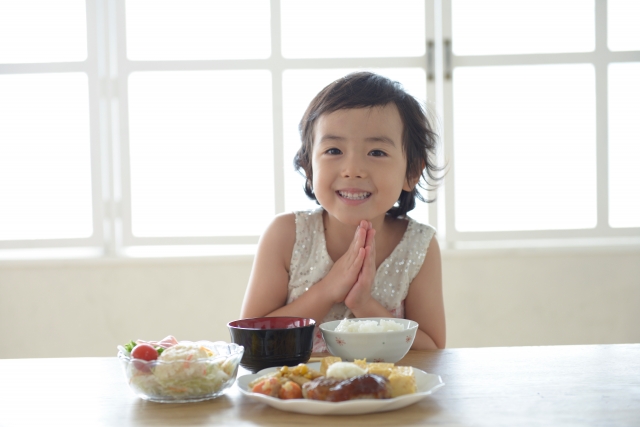In Japan, students receive school lunches — kyūshoku — from elementary through junior high school. Everyone eats the same meal, served at the same time, in the same classroom.
It’s part of the country’s compulsory education and continues until the end of junior high.
From high school onward, students usually bring their own obento lunch boxes.
Kyushoku=School Lunch
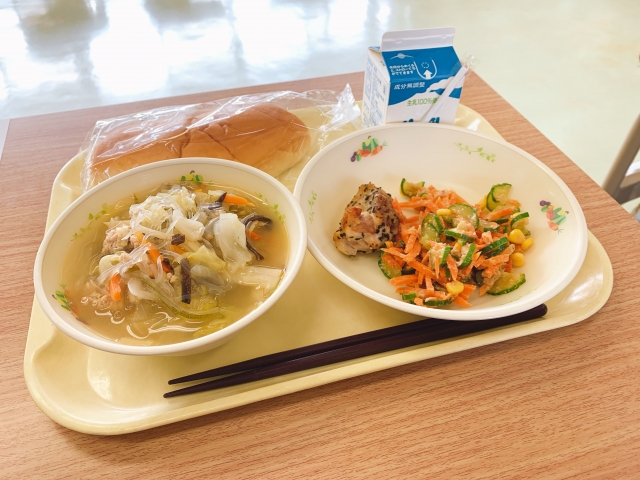
The system began as a way to ensure that all children, regardless of family income, could eat a nutritious meal during the day.
It also lightens the burden on parents, who no longer need to prepare daily lunches.
With a small monthly fee, families can trust that their children are being served balanced, healthy meals at school — and that peace of mind is part of the design.
Nutrition, education, and community support
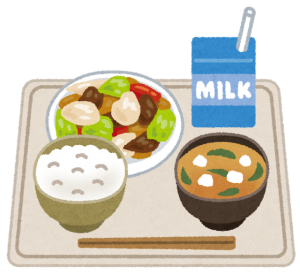
Menus are created by certified dietitians to make sure every student gets the nutrients they need for growth. Each tray includes a main dish of meat or fish, a side of vegetables, rice or bread, and dessert — often a piece of fruit or a small sweet. And there’s always milk.
Milk has been a staple of kyūshoku for decades, considered an essential source of calcium for growing children. In earlier times, people didn’t yet understand lactose intolerance, so milk was seen simply as a symbol of health — a well-meant effort to strengthen young bodies.
Local dishes that preserve tradition
| Okinawa | Kyusyu | Mie |
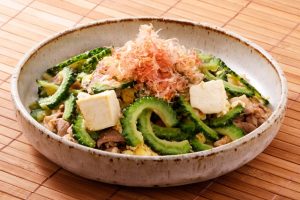 Goya-champlle Goya-champlle |
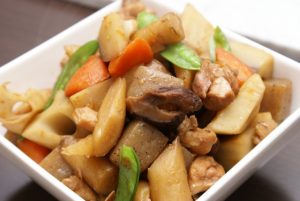
Gameni |
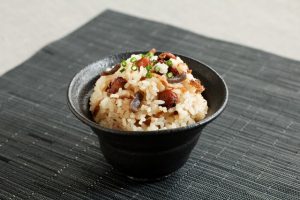
Takomeshi |
Recently, kyūshoku has also become a tool for cultural education. Regional dishes are sometimes featured to teach students about local food traditions — for example, Goya Champuru from Okinawa, Gameni from Kyushu, or Takomeshi from Mie.
These meals connect children to Japan’s diverse food culture and remind them that food is part of identity.
Schools also use local ingredients whenever possible, both to raise awareness of regional produce and to support local farmers and industries. This approach nourishes not just children, but the community itself.
Eating together, learning together

Lunchtime in Japan isn’t just for eating; it’s a quiet exercise in teamwork and responsibility. Students wear white aprons and caps and take turns serving lunch to their classmates.
They wait until everyone has food before beginning to eat. Then, together, they press their hands together and say itadakimasu — a simple phrase that expresses gratitude for the meal, for those who prepared it, and for the lives that became food.
Through this daily ritual, children naturally learn values of patience, respect, and appreciation — not through lectures, but through habit.
Cleaning up with care
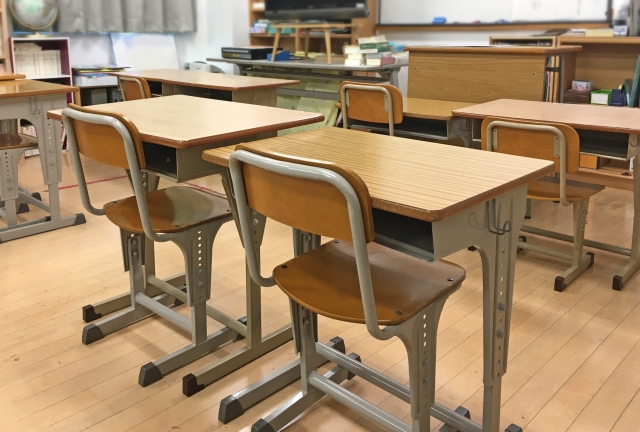
After lunch, students return the empty containers themselves. They wipe desks, clean the classroom, and put everything back in order — quietly and efficiently.
There’s no janitor waiting; the cleanup is part of the routine.
Through this small act, children develop a sense of independence, cooperation, and respect for shared spaces.
They’re also taught not to waste food. Leaving food behind means forgetting the effort of farmers, cooks, and even the living things that gave their lives.
The Japanese spirit of mottainai — “what a waste” — carries within it gratitude and mindfulness.
More than nutrition — a mirror of Japanese values
To outsiders, kyūshoku may seem like a simple meal plan. But it reflects something deeper in Japanese society: that harmony, equality, and appreciation are not taught in words, but practiced through daily routines.
By eating the same food, serving each other, and cleaning together afterward, students learn what it means to live as part of a community. School lunch, then, is more than just food — it’s an early lesson in empathy, discipline, and quiet gratitude that continues far beyond the classroom.
Related Reads
- Obento Lunch Box: Japan’s Colorful Homemade Tradition
- Radio Exercise: Why Japan Still Stretches Together
- Chopstick Etiquette Made Simple

